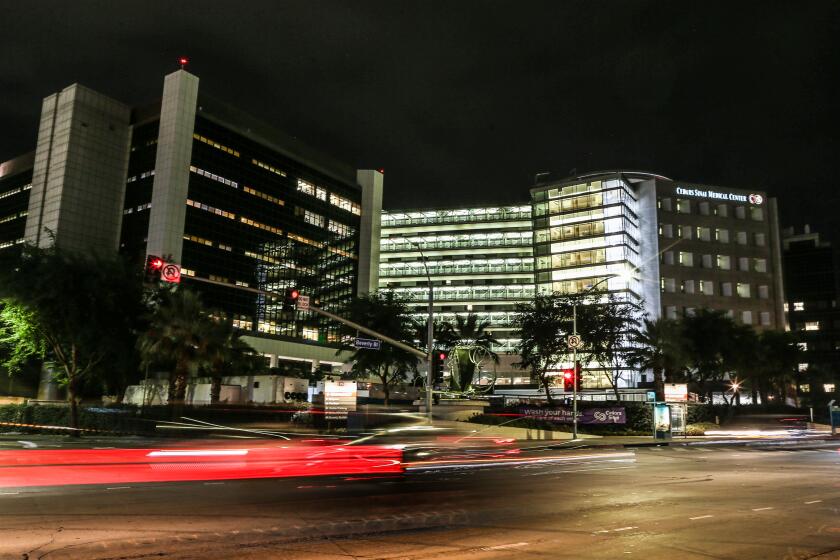Caught in the Cross-Fire : Development: L.A. and Culver City’s battle over the impact of each other’s project puts the complexes themselves in jeopardy.
A simmering feud between Culver City and Los Angeles over massive developments in the Lincoln Boulevard corridor has escalated into a full-scale border war with each side threatening to hold the other side’s project hostage.
The latest clash occurred at a Los Angeles City Council committee hearing Tuesday where Culver City representatives laid the groundwork for an expected lawsuit against the $400-million Channel Gateway project near Marina del Rey.
Culver City contends that the environmental impact report on the massive residential and office complex is inadequate and that Los Angeles has failed to follow proper procedures in considering approval of the development.
But beyond the legal posturing lies another apparent motive: retaliation for Los Angeles suing to stop the $160-million Marina Place regional shopping mall in Culver City. The shopping center would be built on Washington Boulevard, three blocks from the Channel Gateway site in Los Angeles.
In addition to Marina Place and Channel Gateway, a vast city-within-a-city called Playa Vista is planned just south of Marina del Rey. Los Angeles County also wants to intensively redevelop the marina.
A heated competition between the two cities over remaining traffic capacity in the heavily congested Lincoln corridor now threatens to create a kind of legal gridlock that could tie up major developments in the area for years.
The proposed Channel Gateway project and its luxury condominiums, clustered apartments and office building are caught in the fight between neighboring communities.
“I’m troubled that this project has become a hostage in our ongoing border war,” Los Angeles City Councilwoman Ruth Galanter told her city’s Planning and Land Use Management Committee.
To address some of the legal issues raised by Culver City, Galanter suggested a number of changes to the Channel Gateway proposal, unanimously approved by the Los Angeles Planning Commission. And a public hearing on coastal issues was extended until July 10.
“We’re looking at a high likelihood of litigation,” Galanter said.
The 16-acre project still must receive approval from the City Council and state Coastal Commission. And in an interview after the council committee meeting, Galanter said she saw no end to the legal brinkmanship, declaring that Los Angeles has no intention of dropping the lawsuit against Marina Place unless the project is dramatically altered.
Los Angeles contends that the 1-million-square-foot shopping mall will cause environmental damage, tie up traffic for miles and restrict public access to the coast. Galanter and Venice activists argue that most of the shopping center’s impact will be felt by Los Angeles residents who live near the site, which lies at the far western edge of Culver City.
The shopping mall, 50% bigger than Westside Pavilion, will generate up to 56,000 vehicle trips per day on weekends during the peak Christmas shopping season, according to the project’s environmental report.
Eager for the revenue and a measure of civic pride the upscale mall will provide, Culver City officials have steadfastly defended Marina Place.
And in a role reversal, Culver City is now accusing Los Angeles of having failed to fully consider the environmental impacts of Channel Gateway, especially traffic and sewage capacity issues.
The project calls for two 16-story towers with 512 condominium units and clusters of four-story apartment buildings with 544 units. A 300,000-square-foot office building and 14,000 square feet of retail space would also be built on the 16-acre site located on the west side of Lincoln Boulevard near the end of the Marina Expressway.
Developer Jerome Snyder has won community support for the project after extensive negotiations with neighborhood groups in the Oxford Triangle area of Venice. Plans for a vast commercial and retail development on the property were abandoned last year after Snyder and his partners bought the property from an investment group headed by state Sen. Alan Robbins (D-Tarzana).
Two of the community activists most supportive of Channel Gateway told Tuesday’s committee hearing that they hope the rivalries between cities in the Lincoln corridor can be settled.
“No project stands on its own,” Venice attorney Debra Bowen said. “Marina Place is not an island . . . and Channel Gateway is also not an island.” Bowen said Los Angeles council members have a responsibility to deal with the larger issues of traffic and development in the Lincoln corridor.
Venice activist Arnold Springer said that if Channel Gateway is approved, there will be “no opportunity to stop the madness of proliferation of large projects along Lincoln Boulevard.”
Springer praised Channel Gateway as the best of the projects planned in the area but said its approval will create expectations that other major developments in the vicinity will be allowed to proceed.
Unless there is some regional cooperation, Springer said, traffic in the Venice area, which he described as “already impossible,” will only get worse. Public access to the coast also will be threatened, he said.
One tentative step toward establishing a dialogue between Los Angeles and Culver City occurred earlier this month when Los Angeles Mayor Tom Bradley met for an hour in his office with Culver City’s new mayor, Steven Gourley. It was the second meeting between Bradley and Culver City officials in recent months.
The latest session produced pledges to exchange information and explore options for sharing revenue from developments that affect both communities, according to Galanter, who participated in the meeting.
Snyder, who sat in on the discussions, said he saw no solution to the battle between cities that threatens Marina Place and Channel Gateway. “They have two hostages,” Snyder remarked. “Whereas before there was only one.”
More to Read
Sign up for Essential California
The most important California stories and recommendations in your inbox every morning.
You may occasionally receive promotional content from the Los Angeles Times.










